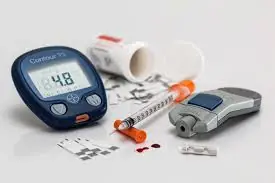Blog
Carbohydrates and Diabetes: What You Should Know.
By Kat Brown, Recent ASU Nutrition Student

What are carbohydrates?
Carbohydrates are a macronutrient that provides fuel for the body. They are broken down into glucose in the body and are a big part in controlling your body’s blood glucose levels. The main types of carbohydrates are sugar, starches, and fiber. These can also be classified as simple or complex carbohydrates. When counting carbohydrates in the diet all three types should be considered. 3 The different types of carbohydrates may affect your blood sugar differently so it is important to work with your dietitian to learn what carbohydrates are best for your diet.
What types of carbs should you be consuming?
The recommended types of carbohydrates for consumption include whole grains, vegetables, fruits, and legumes.1 Nuts can be a great snack and vegetables with edible skin or seeds are also great choices. When choosing pasta, breads, and cereals look for whole grain or whole wheat options. Foods with naturally occurring sugar like milk are better options than foods with extra sugar added such as juices and soda. The guidelines for the general public should be followed for individuals with diabetes.
- Whole Grains: Half of all grains consumed should be whole grains.
- Fiber: Daily recommendation for women is 25g and for men 38g.
How do carbohydrates affect your diabetes?
The America Diabetes Association cites that in 2012 29.1 million Americans were suffering from diabetes and that diabetes is the 7th leading cause of death in the United States. The CDC states that eating healthy is one of the top ways to prevent and manage diabetes. Glycemic control is a crucial part of controlling and managing diabetes. Carbohydrates are ranked according to how they affect your blood glucose levels. 2 A carbohydrate with a low GI will not cause blood glucose values to rise as quickly as a food with a high GI value. 2
Important labs for monitoring your diabetes.
- Glycated hemoglobin (A1C) test2
Goal: <7%
- Random blood sugar test
Normal values < 200mg/dL
- Fasting blood sugar test
Normal values 70-100 mg/dL
- Oral glucose tolerance test
Normal values
- LDL <100mg/dL2
- TG < 150mg/dL2
- HDL >40mg/dL for men; > 50mg/dL for women2
- An eye exam may be necessary to check for blood vessel function
- Foot exam to check for proper nerve function
Making Good Choices:
- Consider portion sizes.1 Make sure that you are reading labels and eating appropriate serving sizes. Refer to the diabetic exchange for accounting for each serving size.
- Choose whole grains that will provide fiber. Choose whole grains that will provide fiber. A whole grain food will contain the grain seed, germ, bran, and endosperm.3
- Avoid sugary beverages which can quickly elevate blood glucose levels.
- Incorporate at 30 minutes of moderate physical activity into a daily routine.5 This has been found to help lower insulin requirements, improve insulin sensitivity, and improve glucose tolerance. 5
Talk to your Dietitian
Each person’s needs are different so it is best to consult with your dietitian to develop a personalized diet plan to manage your diabetes.4 Medical Nutrition Therapy can be used to help treat your diabetes and develop the best well-rounded diet plan to maintain your blood glucose levels. Talk to you RD about carbohydrate counting and exchange.
References
- Marcason, W. (2014). What is the role of carbohydrates in the management of diabetes? Journal of the Academy of Nutrition and Dietetics, 114(10), 1696.
- Saul, N. (2010). Using the glycemic index in diabetes management. The American Journal of Nursing, 110(7), 68; 68-69; 69.
- Evert, A., Boucher, J., Cypress, M., Dunbar, S., Franz, M., Mayer-Davis, E., et al. (2013). Nutrition therapy recommendations for the management of adults with diabetes.36(11), 3821 – 3842.
- Wylie-Rosett, J. (2012). Medical nutrition therapy for youth with type 1 diabetes mellitus: More then carbohydrate counting. Journal of the Academy of Nutrition and Dietetics, 112(11), 1724; 1724-1727; 1727.
- Hayes, C. (2008). Diabetes and exercise. AADE Position Statement, 34(1), 37-40.
















